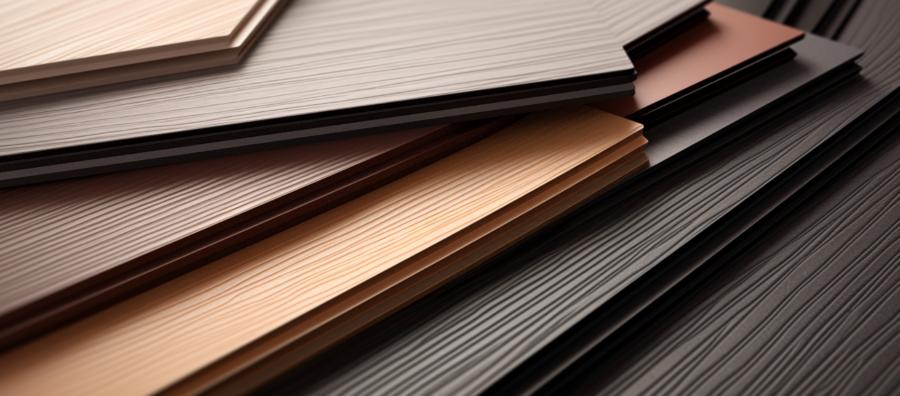China Wood Plastic Composite Material

WPC, or Wood Plastic Composite, is a novel composite material made primarily from wood and PE (polyethylene). It's a high-performance, value-added product created through various composite methods, combining different plastics with wood after suitable treatment.
Wood Plastic Composites boast impressive mechanical properties and high dimensional stability, allowing them to be molded into complex shapes. They have become increasingly popular in non-structural outdoor residential decorations. Their use is also expanding in other construction materials, including decorative elements for doors, windows, corridors, roofs, car interiors, and equipment for outdoor gardens and parks.
The primary resins used in manufacturing Wood Plastic Composites are PE, PVC, PP, and PS. Due to the high cost of new materials, recycled plastics are often used. For the wood component, poplar wood powder is commonly utilized.
In line with the growing emphasis on energy conservation in the construction industry, Wood Plastic Composites are evolving to meet higher energy-saving standards. This evolution includes developing products with enhanced functionality and added value, such as flame retardancy, increased strength, anti-aging properties, creep resistance, and thermal insulation. Moreover, the selection of materials for these composites is diversifying, including various types of raw wood flour and plastics.
The advantages of Wood Plastic Composite materials are numerous: they are waterproof, moisture-proof, resistant to insects, available in a wide range of colors, highly plastic, environmentally friendly, fire-resistant, easy to process, simple to install, and energy-efficient.
Compared to natural wood, Wood Plastic materials are more economical and convenient. They don't require painting, unlike natural wood, which often needs surface paint or water-based coatings. These products are maintenance-free.
Wood Plastic's inherent plasticity allows for easy customization, reflecting unique personal styles. This versatility has led to its widespread use in various garden landscapes, including pavilions, waterside walkways, flower bed borders, pergolas, outdoor garden planters, waste bins, and leisure furniture.
Wood Plastic Composites boast impressive mechanical properties and high dimensional stability, allowing them to be molded into complex shapes. They have become increasingly popular in non-structural outdoor residential decorations. Their use is also expanding in other construction materials, including decorative elements for doors, windows, corridors, roofs, car interiors, and equipment for outdoor gardens and parks.
The primary resins used in manufacturing Wood Plastic Composites are PE, PVC, PP, and PS. Due to the high cost of new materials, recycled plastics are often used. For the wood component, poplar wood powder is commonly utilized.
In line with the growing emphasis on energy conservation in the construction industry, Wood Plastic Composites are evolving to meet higher energy-saving standards. This evolution includes developing products with enhanced functionality and added value, such as flame retardancy, increased strength, anti-aging properties, creep resistance, and thermal insulation. Moreover, the selection of materials for these composites is diversifying, including various types of raw wood flour and plastics.
The advantages of Wood Plastic Composite materials are numerous: they are waterproof, moisture-proof, resistant to insects, available in a wide range of colors, highly plastic, environmentally friendly, fire-resistant, easy to process, simple to install, and energy-efficient.
Compared to natural wood, Wood Plastic materials are more economical and convenient. They don't require painting, unlike natural wood, which often needs surface paint or water-based coatings. These products are maintenance-free.
Wood Plastic's inherent plasticity allows for easy customization, reflecting unique personal styles. This versatility has led to its widespread use in various garden landscapes, including pavilions, waterside walkways, flower bed borders, pergolas, outdoor garden planters, waste bins, and leisure furniture.
Article kindly provided by china-composites.com
Latest Articles
- Uncommon Ways to Estimate Waste Volume Before a Cleanup Project
- How to Spot and Tackle Hidden Moisture Problems Before They Become Renovation Nightmares
- How Underground Pipe Issues Can Lead to Structural Damage
- Simple Design Tricks That Encourage Backyard Biodiversity
- Why Your Showerhead Is Suffering From a Mineral Midlife Crisis
- Gateways That Turn Heads While Keeping Your Property Safe
- Listening Pipes: Using Sound to Diagnose Hidden Home Plumbing Issues
- Small Changes That Make a Kitchen Feel Completely New
- Scents That Refuse to Leave and How to Outwit Them
- How Personalisation Makes Homewares Feel Special
- Asphalt Advantage and the HOA Budget Balancing Act
- The Step-By-Step Process of Turning a Garden Vision into Reality
- Rain Doesn't Fall Straight: Why Roof Shape and Wind Matter More Than You Think
- How Fire Pit Design Quietly Shapes Human Connection
- Invisible Passengers Who Never Pay the Fare
- When the Ground Has Opinions: Learning to Hear Tree-Soil Conversations
- When Windows Sweat: What Condensation Reveals About Your Home's Hidden Climate
- Vertical Micro-Oasis for Kitchen Herbs in Tight Urban Spaces
- Why Clean Workspaces Quietly Boost Creativity
- Color-Coding Your Backyard: a Homeowner's Guide to Safe DIY Marking
- Interior Design
- Home Improvement
- Gardening
- Home Organization
- Home Maintenance
- DIY Crafts
- Kitchen and Dining
- Bathroom Design
- Home Security
- Home Automation
- Green Living
- Home Office
- Home Decor
- Garden Design
- Pet Care
- Home Technology
- Landscaping
- Home Energy Efficiency
- Home Cleaning
- Home Safety
- Home Exterior
- Home Insulation
- Home Buying
- Home Selling
- Renting
- Tradespeople
- Garage
- Bedroom
- Painting and Decorating
- Plumbing and Drainage

